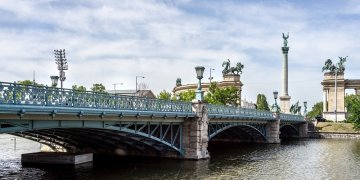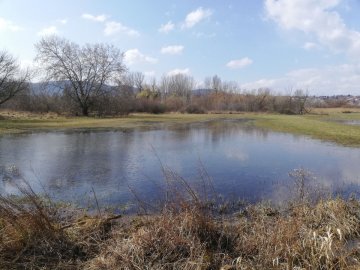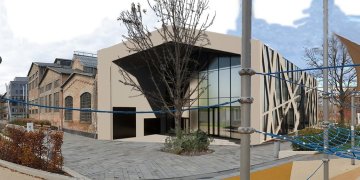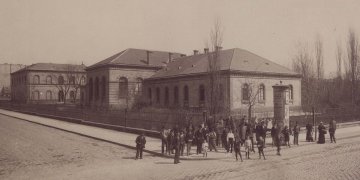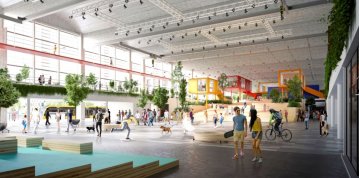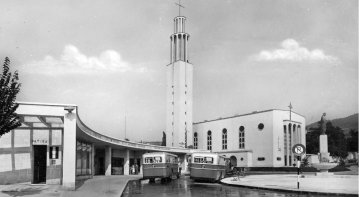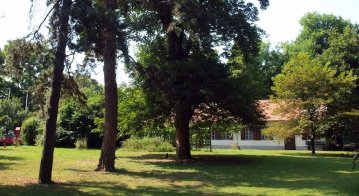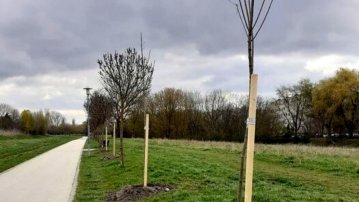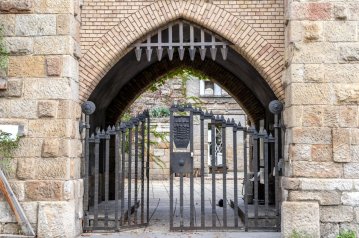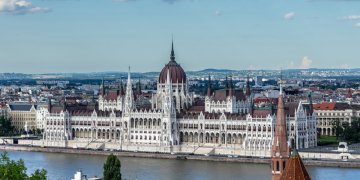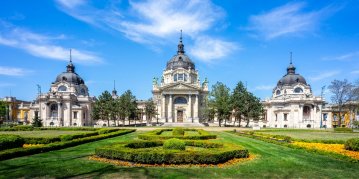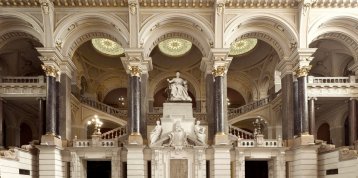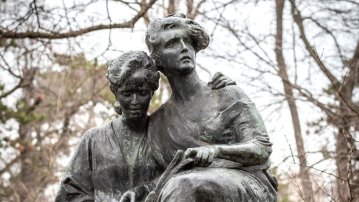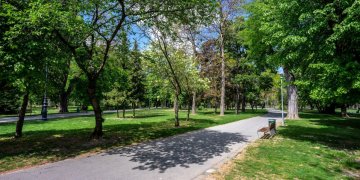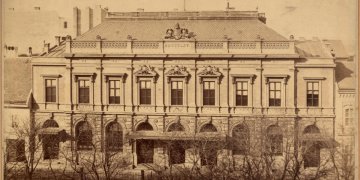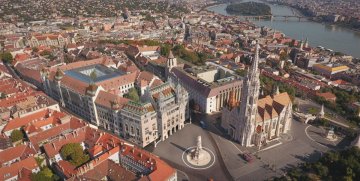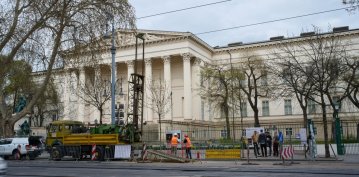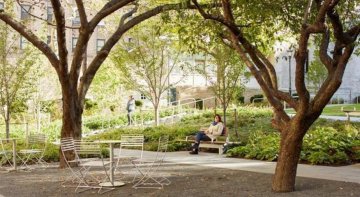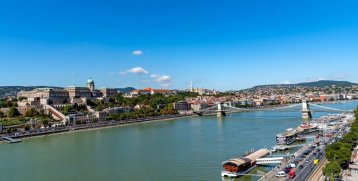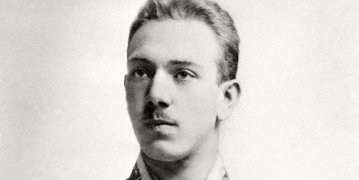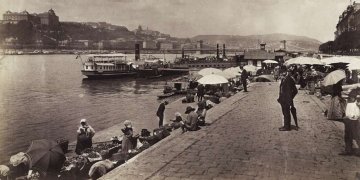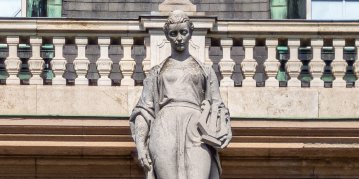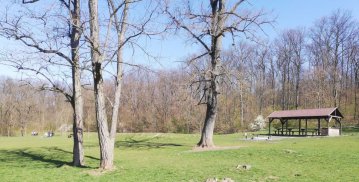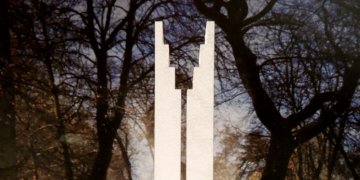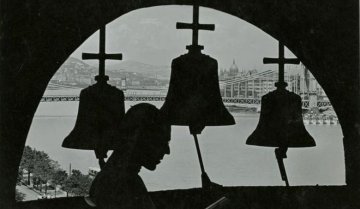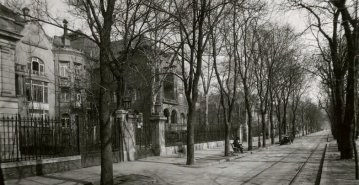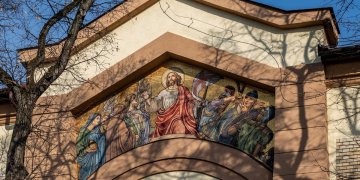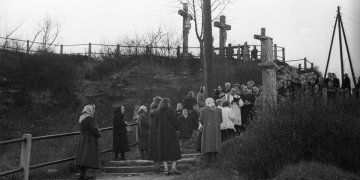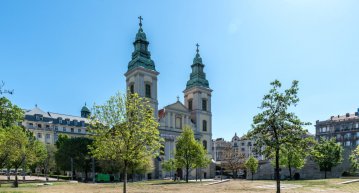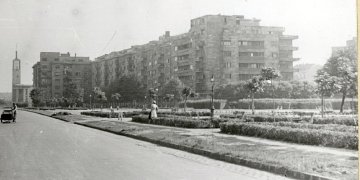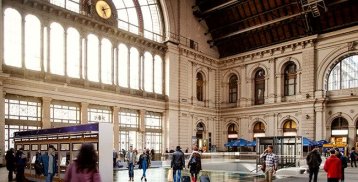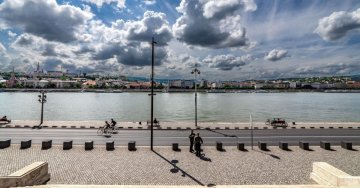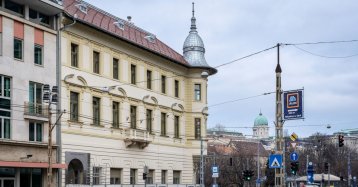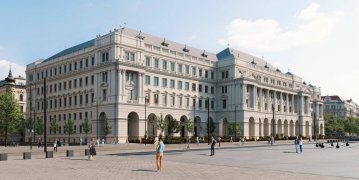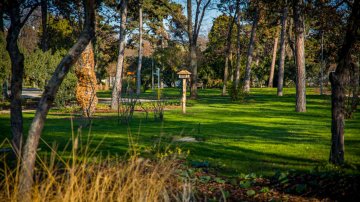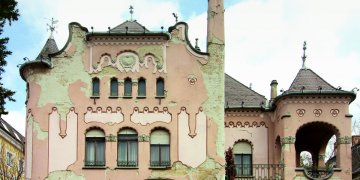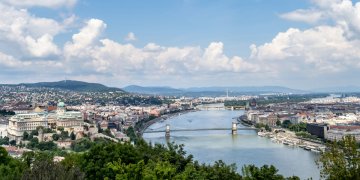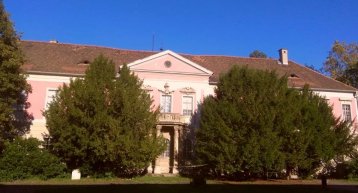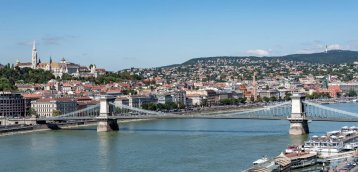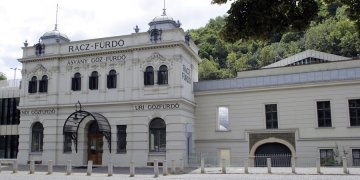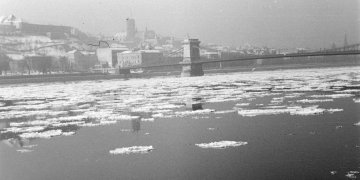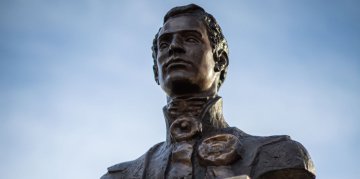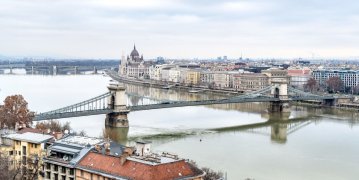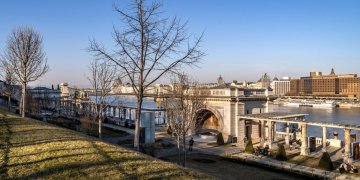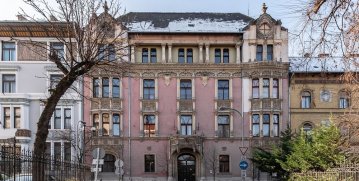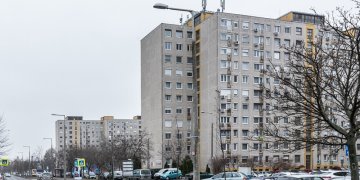 The Bridge Report, which brought a turning point in the history of Budapest
A travel report that changed the history of Pest and Buda, as well as Hungary. The little book contributed to the change of half a thousand years of legal customs and the implementation of an investment of unprecedented size and technical quality. This book was The Bridge Report [Hídjelentés in Hungarian].
The Bridge Report, which brought a turning point in the history of Budapest
A travel report that changed the history of Pest and Buda, as well as Hungary. The little book contributed to the change of half a thousand years of legal customs and the implementation of an investment of unprecedented size and technical quality. This book was The Bridge Report [Hídjelentés in Hungarian].
Search result
Second life for the bridges of Budapest?
April 30, 2021 at 9:00 AM
Recently, an announcement was published about reusing the pieces of the soon-to-be-demolished Southern Railway Bridge in Budapest for other, smaller bridges, such as connections to Hajógyári Island. At first glance, it sounds like a rather strange idea to create a new bridge from a used one, but it is not uncommon at all, even in Budapest. There are several bridges in the capital, the elements of which were once parts of other structures.
The last swamp in Buda may become an eternal forest
April 29, 2021 at 6:30 PM
A questionnaire is being used to assess people's position on the development of the last swampy area of Buda, the protected Mocsárosdűlő. The Budapest City Council hopes to create an eternal forest by planting native tree species in the area. The council is waiting for opinions primarily on the function of the area by 5 May.
Work continues on Millenáris – Reconstruction of Reception Hall begins
April 28, 2021 at 6:00 PM
The renovation of the Reception Hall and the Main Hall of the former Ganz factory on Millenáris Park has begun. The buildings will host community venues and exhibition spaces. The park will host the Álmo Álmodói – Világraszóló magyarok 2.0 ('Dreamers of Dream – Internationally renowned Hungarians') exhibition to celebrate the 20th anniversary of the park's opening.
Budapest is home to one of the oldest veterinary training institutions in Europe
April 28, 2021 at 2:30 PM
The building complex of the University of Veterinary Medicine Budapest has been serving Hungarian veterinary training for exactly 140 years. The building complex in Erzsébetváros, located between today's Rottenbiller and Bethlen Streets, was designed by Imre Steindl, decorated with Zsolnay majolica and stained glass by Miksa Róth. On the World Day of Veterinarians, 28 April, PestBuda presents the history and building complex of the University of Veterinary Medicine Budapest.
Nagyvásártelep reborn – Winning plans announced
April 27, 2021 at 6:30 PM
A Hungarian architectural firm won the international tender announced for the reconstruction of the Nagyvásártelep area in the 9th District. Designed by Aladár Münnich and built in 1932, the 247-meter-long and 42-meter-wide hall will be reborn as event spaces, sports halls, cafes and clubrooms on three levels, according to the plans of BIVAK Stúdió, as part of the Budapest Diákváros (Student City) development.
Renewal in Pasarét: renovation of the Franciscan church and the new parish building to be completed in the autumn
April 27, 2021 at 9:30 AM
The life of one of the first modern churches in Budapest may soon be given new impetus: the investment on Pasaréti Square, next to the church designed by Gyula Rimanóczy and completed in 1934, has begun. The project will renew the parish building, create an up-to-date library and community centre that follows the style of the modern church. Due to the works, the 2nd District church will be closed in July-August, the reconstruction is expected to be completed by Autumn.
Visitor centre planned for Jókai kert – Steindl Villa to host exhibitions
April 21, 2021 at 4:00 PM
The Jókai Garden and the Steindl Villa on Sváb Hill are to be renovated. The investment is planned to be completed by 2022, and the developers hope that Budapest will be enriched with a popular resting place.
Trees planted along Rákos Stream
April 20, 2021 at 6:00 PM
Ash trees, rowan trees and maples have been planted along the Rákos Stream by the Rákosmente local council. The new plants replaced damaged trees along the cycle path.
ICOMOS award caring for the Jewish cemetery on Salgótarjáni Street
April 19, 2021 at 2:00 PM
The Hungarian National Committee of ICOMOS awarded the National Heritage Institute for the restoration, maintenance of the Jewish Cemetery on Salgótarjáni Street and its presentation to the public on World Monument Day. The National Heritage Institue was lauded in the Exemplary Monument Care category.
The iron founder Ignác Schlick was born 200 years ago – His Factory built the Dome of the Parliament Building
April 17, 2021 at 10:00 AM
The factory he founded played an indispensable role in the development of the Hungarian capital, as he made the iron structures of many emblematic buildings: the dome of the Parliament, the Opera House and the Hungarian Academy of Arts and the Museum of Applied Arts, as well as the glass-iron facade curtain walls of the Nyugati (Western) and Keleti (Eastern) railway stations. The Deák statue in Széchenyi Square was also made in his foundry. Although Ignác Schlick may be known to a few, his work is often forgotten in the development of Budapest.
Dismantled historic changing cabins at Széchenyi Baths to be rebuilt
April 16, 2021 at 5:00 PM
The restoration of the changing cabins built during the 1927 expansion of the baths, which were demolished without a permit at the beginning of 2020, will be rebuilt.
Statue of Justitia returning to Kossuth Square
April 16, 2021 at 2:30 PM
The 1896 marble statue of the Roman goddess of justice, Justitia, by Alajos Strobl, is returning to its original place after 71 years. The statue is being moved from the building of the Curia on Markó Street to the Palace of Justice opposite the parliament building. The building designed by Alajos Hauszmann on Kossuth Square, which previously housed the Museum of Ethnography, is being returned to the Curia. The palace is thus being renovated, and the facades and monumental interiors will regain their former beauty.
Jókai's loyal readers - Reading Girls, a statue by Alajos Strobl to return to Jókai Square
April 16, 2021 at 9:30 AM
Not only books, but sculptures also have their own destiny – this is what comes to mind when looking at the plans for the renovation of Jókai Square in Terézváros. In the shadow of Mór Jókai's sculpture erected in 1921, a smaller work appears, which may be familiar to many from among the trees of Városliget. The statue of the Reading Girls was originally intended by the creator Alajos Strobl as a side figure of the Jókai statue in Jókai Square but was never erected on the square. The Reading Girls statue was erected in 1929 but will now be moved from Városliget to its originally intended location.
Green space developments to increase in second half of the decade
April 15, 2021 at 5:00 PM
Pestbuda has studies the Budapest Green Infrastructure Development and Maintenance Action Plan recently adopted by the Budapest General Assembly in detail. The document called the Dezső Radó Plan is essentially a summary of the green area developments in Budapest that have previously been decided at a government, district or city level. Several of them have already started and are in progress, and there are some new elements in the recently released plans.
Lanchid renovation – Pedestrian underpass in Pest closed
April 15, 2021 at 2:30 PM
The pedestrian underpass on the pest side of the river bridge will be closed on 16 April. The passage on the Buda sie will remain open until mid-June. Both pedestrian underpasses are to be widened as part of the renovation. While footpaths across the bridge are also closed, buses are free between Clark Ádám Square and Széchenyi Square. The reconstruction of the bridge is planned to last until 2023.
Visible work on exterior of Ministry of Finance building begins
April 14, 2021 at 7:30 PM
The monumental reconstruction of the facade and roof structure of the Ministry of Finance on Szentháromság Square and the restoration of the representative interiors is to begin soon. The building, which will be completed by 2023, will follow the designs Sándor Fellner created.
Construction of metro line 5 begins – First boreholes drilled
April 14, 2021 at 6:00 PM
To prepare the plans for the planned tunnel between Közvágóhíd and Kálvin tér, the Budapest Development Center will start drilling boreholes for soil tests at 93 locations. Work started first on Kálvin Square. The extension of the suburban railway lines to Csepel and Ráckeve to Kálvin tér and the construction of metro line 5 will connect the southern parts of Budapest to the city centre more efficiently.
Klauzal Square to be renovated with Ghetto memorial
April 14, 2021 at 3:30 PM
The 7th District Local Council has announced a design tender for a public memorial to be erected on the renovated Klauzál Square. The future memorial site planned to be inaugurated in 2022 will memorialise the Pest ghetto, which once included Klauzal Square.
Budapest may become World Book Capital for the 150th anniversary of the unification of Buda and Pest
April 13, 2021 at 6:00 PM
Budapest will submit a bid for the title of World Book Capital 2023 to UNESCO on 15 April. In the event of a successful application, cultural programs promoting books and reading will be organised throughout Budapest for a year.
Alfréd Hajós, Hungary's first Olympic champion, learned to swim on the Danube section in front of the Parliament
April 13, 2021 at 9:00 AM
As an outstanding talent, Alfréd Hajós created something unique in many sports and his chosen profession, architecture. He won the first Olympic champion title for Hungary when 125 years ago; in addition to the 100-meter sprint, he also won the 1,200-meter race in the sea-swimming competition held on 11 April 1896, near Athens. As an architect, he designed, among others, the National Sports Swimming Pool on Margit Island and the synod headquarters of the Reformed Church in Zugló.
The longest monuments in Budapest: the history of the embankments
April 12, 2021 at 9:30 AM
Until the middle of the 19th century, anyone could walk down to the undeveloped, muddy banks of the Danube, but during a flood, nothing stood in the way of the water. The 12-kilometre-long embankments along Budapest's Danube Banks have become an essential part of the cityscape and protect the capital from floods. In connection with the freshly announced reconstruction of the Pest embankment, Pestbuda presents the history of these magnificent structures.
65 years of National Poetry Day – Sculptures in Budapest pay tribute to poetry
April 11, 2021 at 12:00 PM
For the second year in a row, the country is celebrating National Poetry Day behind closed doors. After last year's tour of statues, when Pestbuda visited the monuments of famous poets, we now showcase several works depicting poetry itself on Budapest's famous buildings.
A Chamber of adventures in Budapest – Kamaraerdő holds excitement for everyone
April 10, 2021 at 12:00 PM
Join Pestbuda on a visit to the largest contiguous forest in the most populous district of Budapest. It is a forest, but it could be called an adventure since there are no other places in Budapest with so many leisure activities.
12th District selects World War II memorial
April 8, 2021 at 3:00 PM
The symbolism of scarcity and hope – are the words used by the judges to describe the winning design of the World War II memorial planned for the 12th District. The sculpture will be built alongside the Varosmajori Church and has been designed to remember the district residents that lost their lives in the conflict.
Popes in Budapest – Several leaders of the Catholic Church visited the Hungarian capital before being elected
April 8, 2021 at 10:00 AM
The recent announcement that Pope Francis would visit Budapest in the autumn of 2021 for the closing Mass of the International Eucharistic Congress came as a true surprise to many. The last time a similar event took place was exactly thirty years ago, in 1991, when Pope John Paul II visited the Hungarian capital. Four other leaders of the Catholic Church came to Budapest, even before they were elected the Bishop of Rome. But what have former popes seen of our capital? In 1891 Pope Pius XI saw a tram for the first time in Budapest in 1891. John XXIII visited in 1930 for the St. Emeric Memorial Year, while Pius XII and John Paul VI attended the 1938 Eucharistic Congress. Although none of them visited as popes, it meant a lot to them and the Hungarians that they visited Budapest.
Dutch memories fill Budapest
April 6, 2021 at 9:00 AM
Városliget Avenue is more than two hundred years old. The elegant road lined with villas and public buildings became the home of the elite of Pest in the last third of the 19th century. Several successful people had a house or holiday home built there, and many celebrities treated themselves in the sanatoriums located in the area. Városliget Alley has become a well-known name, yet, 100 years ago, in 1921, it was renamed Vilma Királynő Road after Queen Wilhelmina. The cause: a strange tale for which Budapest wanted to express its thanks to the Dutch.
Depictions of Christ portray the events of the Holy Week around Budapest
April 4, 2021 at 9:30 AM
Depictions of Jesus can be found in every district of Budapest of one walks with their eyes open. Most often, crosses erected near Catholic churches or by public roads are reminders of Christ’s crucifixion, but several Calvaries, statues, and building mosaics also depict Easter-related events: the story of the Passion and the resurrection of the Messiah. This virtual walk will present a selection of the most valuable works of art that give hope at Easter in 2021.
One of the oldest ways of the cross in Budapest – The Kiscell Calvary is over 200 years old
April 3, 2021 at 11:00 AM
During the Easter period, people used to visit many calvaries, i.e. Ways of The Cross, in Buda and Pest. One of the oldest calvaries in the city, built 200 years ago and starting next to the Kiscelli Museum, is still one of the most visited Ways of The Cross in Budapest today. Even in 1956, the year of the revolution plenty of people walked the Way, as can be seen in a photo from 65 years ago.
Church Renovation programme to begin
April 2, 2021 at 2:30 PM
Before easter, the government announced a major church renovation programme: 25.7 billion HUF was reallocated to renovate the churches.
Zsolnay fireplace of Szent Stephen's Hall to be installed soon
April 1, 2021 at 2:00 PM
One of the most beautiful ornaments of the first reconstructed historical hall of Buda Castle will be the more than 2.5 meters wide and 4.5 meters high ceramic fireplace, made by the Zsolnay Porcelain Manufactory in Pécs. Experts worked on the reconstruction of a masterpiece for five years. The fireplace is made up of 611 pieces, for which nearly a kilogram of 24-carat gold was used. The reborn Saint Stephen's Hall will be opened to the public on 20 August.
Szent István Park turns 85 – A parquet factory once sprawled across the greens
April 1, 2021 at 9:00 AM
The green that opened on 1 April 1936 was originally called Lipótváros Park, then Rakovszky Park. It was given its current name in 1937 and has been called Szent István Park ever since. The site of the beautiful ornamental garden was once a parquet factory, and its construction was initiated in the 1920s by the President of the Public Works Council at the time, Iván Rakovszky. Újlipótváros' most popular park is 85 years old.
Construction of passenger centre in Keleti Railway Station begins
March 29, 2021 at 3:00 PM
The construction of the passenger centre in the 137-year-old Keleti Railway Station, which serves nearly 11 million passengers a year, has begun. The development will greatly increase passenger comfort, bring international and domestic ticket sales into the same hall, while new escalators and lifts will make the centre easily accessible.
Pest Embankment opened to pedestrians again
March 26, 2021 at 5:00 PM
Once again, the Pest Embankment will be closed to traffic on weekends between Margit Bridge and Közraktár Street. Only pedestrians and cyclists will be allowed in the area.
Sándor Márai Cultural Centre completed in the former Buda Civic Casino on Krisztina tér
March 25, 2021 at 3:00 PM
The new cultural and community centre of the 1st District, the Sándor Márai Cultural Centre, was opened on 22 March in the newly renovated building of the former Buda Civic Casino at 1 Krisztina Square.
Design renders for renovation of Ministry of Agriculture released
March 24, 2021 at 9:00 AM
The renovation of the Ministry of Agriculture's Kossuth Square building will begin in the summer. The design renders newly published show that the Neo-Renaissance facades will be restored to their original beauty. The previously closed central courtyard will be opened to visitors. Gyula Bukovics designed the palace, and its construction began in 1885, the same year in which construction of the Parliament building on the other side of the square but was completed fifteen years earlier, in 1887.
Rondo to be restored amid continuing works in City Park
March 22, 2021 at 3:00 PM
Városliget Promenade will be rebuilt. The Rondo, the historical entrance of City Park, will be restored, and a new part of the park will be created between the House of Hungarian Music and the new Museum of Ethnography. Almost 80,000 square metres of green space will be renewed, and 200 new deciduous trees planted by the spring of 2022. In addition, hot air balloons will once again rise from Mimóza Hill in City Park.
Sipeki Balás Villa to be restored on Hermina Road
March 21, 2021 at 2:00 PM
The Art Nouveau Sipeki Balás Villa, built between 1905 and 1907, currently the headquarters of the Hungarian National Association of the Blind and Visually Impaired, is to be fully restored. The listed building, designed by Ödön Lechner, will be renovated under supervision for HUF 1.94 billion. The wing attached to it in the 1970s will be demolished and replaced with a new wing.
Government and Budapest City Council agree on major development plans
March 19, 2021 at 5:00 PM
The government plans to provide 3000 Billion HUF in additional funding towards healthcare and transportation development and environmental protection initiatives, according to plans laid out by the Government Commissioner for the Development of Budapest. According to an agreement reached on Thursday, the government will finance three projects: the renewal of the Pest embankment, the southern extension of the Buda intertwining tram, and the renovation of the Kelenföld bus station with the creation of a new 1,500-place P+R car park.
Petőfi Literary Agency gifted House of Hungarian Writers, Óbuda Shipyard and Zichy Palace
March 18, 2021 at 9:30 AM
The Petőfi Literary Agency, a subsidiary of the Petőfi Literary Museum, will be gifted several state-owned buildings in Budapest. According to plans, a pop culture and related arts centre will be created in the facilities of the Óbuda Shipyard and Zichy Castle by 2025.
Pavements closed – Renovation of Chain Bridge begins
March 17, 2021 at 2:00 PM
Chain Bridge will be closed to pedestrians from 17 March, and walking across the bridge will be forbidden until work is completed in 2023. The pavements have been closed as part of preparatory steps before the renovation begins. Motorists can use the bridge until mid-June.
Building of Rác Bath up for auction
March 16, 2021 at 4:00 PM
Although the renovation of the Rác Bath complex was completed in 2010, it has never reopened due to protracted legal and financial disputes. Now the building's condition has deteriorated so much that it needs to be renovated again. The building – owned by Rác Nosztalgia Kft., which is under liquidation – will now be put up for auction together with the hotel connected to it for 5.1 billion HUF.
A blast saved Budapest from icy floods 65 years ago
March 16, 2021 at 10:00 AM
The sad year of 1956 brought other disasters than the brutal defeat of the revolution. Pestbuda has already reported on the earthquake in January, but another disaster struck the country in March. A huge flood wreaked havoc south of Budapest, and special measures were needed to protect the capital. Ice blocks were blown up near Kossuth Bridge.
János Esterházy in Budapest – The memorials of a martyr
March 14, 2021 at 6:00 PM
János Esterházy was an outstanding Hungarian statesman, a martyr of the 20th century. He alone did not vote on a bill allowing the deportation of Jews in the Slovak parliament. Although his work is mainly related to Upper Hungary (in present-day Slovakia), Esterházy lived in Budapest several times, and many monuments in the capital are connected to him. Among others, he saved the lives of thousands of Slovak, Hungarian and Jewish people and helped evacuate more than a hundred thousand Poles to Hungary and Budapest. His beatification process began in 2019.
Statue of Pál Vasvári erected in the garden of the National Museum
March 14, 2021 at 11:00 AM
Pál Vasvári was a leading figure in the Youths of March and played an important role in wording the 12 points. As one of the heroes of the War of Independence, he fell in battle in 1849, living only 23 years. A bust in his honour was unveiled in the garden of the National Museum on Saturday.
Renovation of Chain Bridge begins
March 12, 2021 at 6:00 PM
On 17 March, the pedestrian pavements on Chain Bridge will be closed as the renovation begins.
From Triton's Well to Ifipark - The stories of the Castle Garden Bazaar
March 12, 2021 at 10:00 AM
The Neo-Renaissance garden of the Castle Garden Bazaar was built between 1874 and 1882. It is a worthy pair to any palace garden in the world and houses many details that have exciting stories to tell beyond their beauty: the Triton Fountain, the garden's budding roses, and the medieval curtain wall could each tell hundreds of stories if not sentenced to silence. So let us tell their stories for them.
A Master of Art Nouveau – Remembering Zoltán Bálint
March 11, 2021 at 11:00 AM
Zoltán Bálint was born 150 years ago and played a significant part in redefining Budapest's architecture, but his name is little known today. His prolific oeuvre, his work with fellow architect, Lajos Jámbor, elevates him to an unavoidable position in Hungarian Art Nouveau architecture.
Construction of Gazdagrét confirmed 40 years ago
March 10, 2021 at 9:00 AM
Gazdagrét is unique among the housing estates in Budapest. Located in the Buda hills, the area has clear borders and remains a popular place to live today. A popular soap opera followed its life for years.
Iconic Bálna in Budapest to be renovated
March 9, 2021 at 4:00 PM
Budapest's iconic building, Bálna or the Whale, which has defined the Danube-banks for years, is to be renovated. The structural renovation will see key materials replaced with modern counterparts, but the exterior will not change. Bálna will also receive decorative lighting.
New bridges in Budapest
March 8, 2021 at 9:00 AM
PestBuda has reported on the largest railway development, the Southern Ring Railway, currently underway in Budapest several times. Recently, new renders appeared of an important element of the railway line, a new bridge. Take a look.
 The Bridge Report, which brought a turning point in the history of Budapest
A travel report that changed the history of Pest and Buda, as well as Hungary. The little book contributed to the change of half a thousand years of legal customs and the implementation of an investment of unprecedented size and technical quality. This book was The Bridge Report [Hídjelentés in Hungarian].
The Bridge Report, which brought a turning point in the history of Budapest
A travel report that changed the history of Pest and Buda, as well as Hungary. The little book contributed to the change of half a thousand years of legal customs and the implementation of an investment of unprecedented size and technical quality. This book was The Bridge Report [Hídjelentés in Hungarian].
 Drama on the university wall - The heroic monument was planned 95 years ago
In the constant hustle and bustle of the Egyetem Square in Pest, the students may not even notice the monument that decorates the short section of wall between the church and the central building of ELTE. However, it commemorates their predecessors, the heroes who fought for their country in World War I, and those who heroically helped them. The first design of the dramatically collapsing soldier was born in 1928, ninety-five years ago.
Drama on the university wall - The heroic monument was planned 95 years ago
In the constant hustle and bustle of the Egyetem Square in Pest, the students may not even notice the monument that decorates the short section of wall between the church and the central building of ELTE. However, it commemorates their predecessors, the heroes who fought for their country in World War I, and those who heroically helped them. The first design of the dramatically collapsing soldier was born in 1928, ninety-five years ago.
 A message from the former school: An exhibition in memory of János Neumann was opened at the Fasori Secondary School
An exhibition was opened in János Neumann's former school, the Fasori Lutheran Secondary School, on the occasion of the 120th anniversary of the world-famous mathematician's birth. In the exhibition presenting the former Neumann milieu, paintings, graphics, photos, furniture, and objects tell the story of the art-supporting spirit of the noble bourgeois family at the turn of the century.
A message from the former school: An exhibition in memory of János Neumann was opened at the Fasori Secondary School
An exhibition was opened in János Neumann's former school, the Fasori Lutheran Secondary School, on the occasion of the 120th anniversary of the world-famous mathematician's birth. In the exhibition presenting the former Neumann milieu, paintings, graphics, photos, furniture, and objects tell the story of the art-supporting spirit of the noble bourgeois family at the turn of the century.

